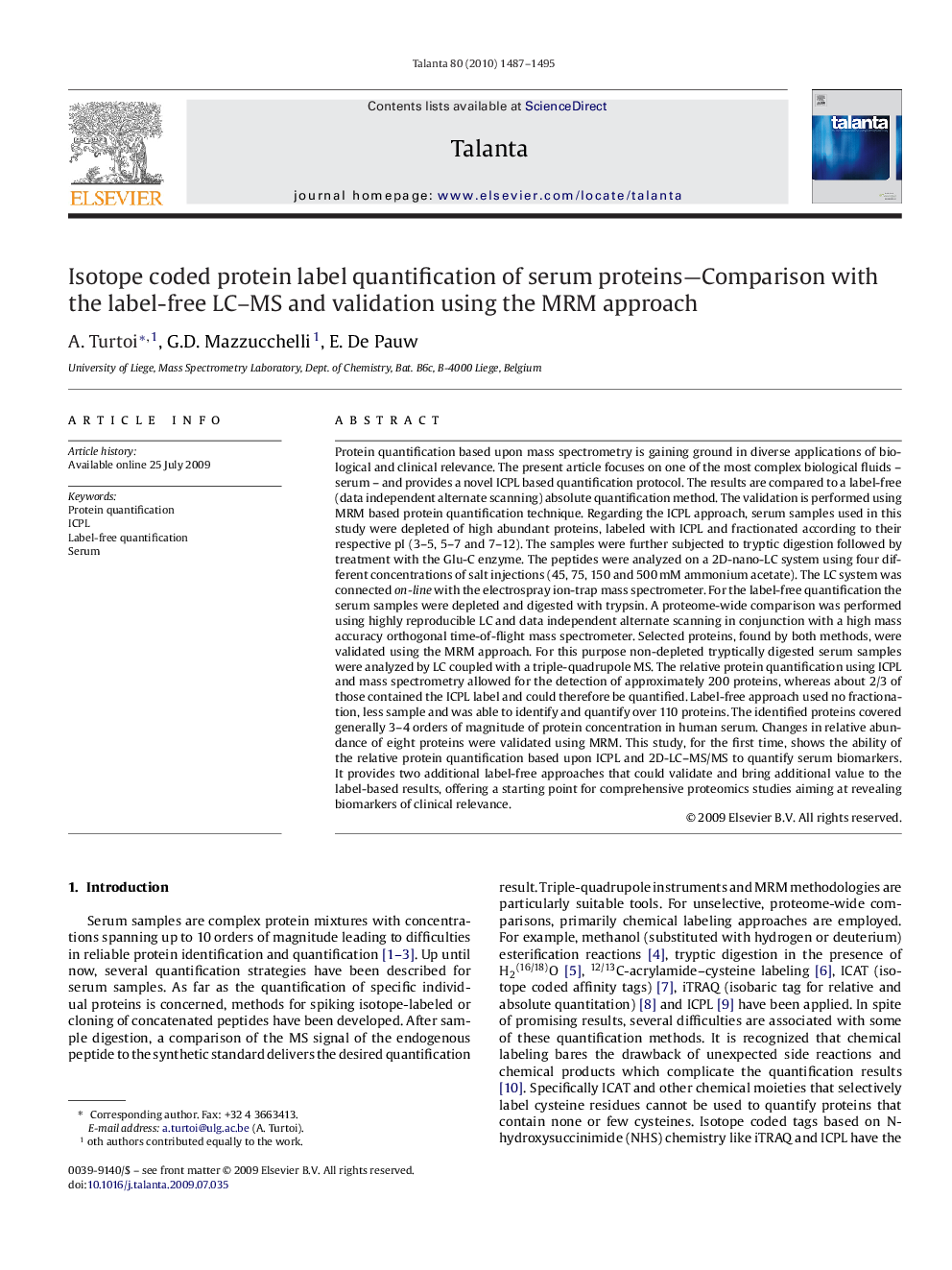| Article ID | Journal | Published Year | Pages | File Type |
|---|---|---|---|---|
| 1243205 | Talanta | 2010 | 9 Pages |
Protein quantification based upon mass spectrometry is gaining ground in diverse applications of biological and clinical relevance. The present article focuses on one of the most complex biological fluids – serum – and provides a novel ICPL based quantification protocol. The results are compared to a label-free (data independent alternate scanning) absolute quantification method. The validation is performed using MRM based protein quantification technique. Regarding the ICPL approach, serum samples used in this study were depleted of high abundant proteins, labeled with ICPL and fractionated according to their respective pI (3–5, 5–7 and 7–12). The samples were further subjected to tryptic digestion followed by treatment with the Glu-C enzyme. The peptides were analyzed on a 2D-nano-LC system using four different concentrations of salt injections (45, 75, 150 and 500 mM ammonium acetate). The LC system was connected on-line with the electrospray ion-trap mass spectrometer. For the label-free quantification the serum samples were depleted and digested with trypsin. A proteome-wide comparison was performed using highly reproducible LC and data independent alternate scanning in conjunction with a high mass accuracy orthogonal time-of-flight mass spectrometer. Selected proteins, found by both methods, were validated using the MRM approach. For this purpose non-depleted tryptically digested serum samples were analyzed by LC coupled with a triple-quadrupole MS. The relative protein quantification using ICPL and mass spectrometry allowed for the detection of approximately 200 proteins, whereas about 2/3 of those contained the ICPL label and could therefore be quantified. Label-free approach used no fractionation, less sample and was able to identify and quantify over 110 proteins. The identified proteins covered generally 3–4 orders of magnitude of protein concentration in human serum. Changes in relative abundance of eight proteins were validated using MRM. This study, for the first time, shows the ability of the relative protein quantification based upon ICPL and 2D-LC–MS/MS to quantify serum biomarkers. It provides two additional label-free approaches that could validate and bring additional value to the label-based results, offering a starting point for comprehensive proteomics studies aiming at revealing biomarkers of clinical relevance.
